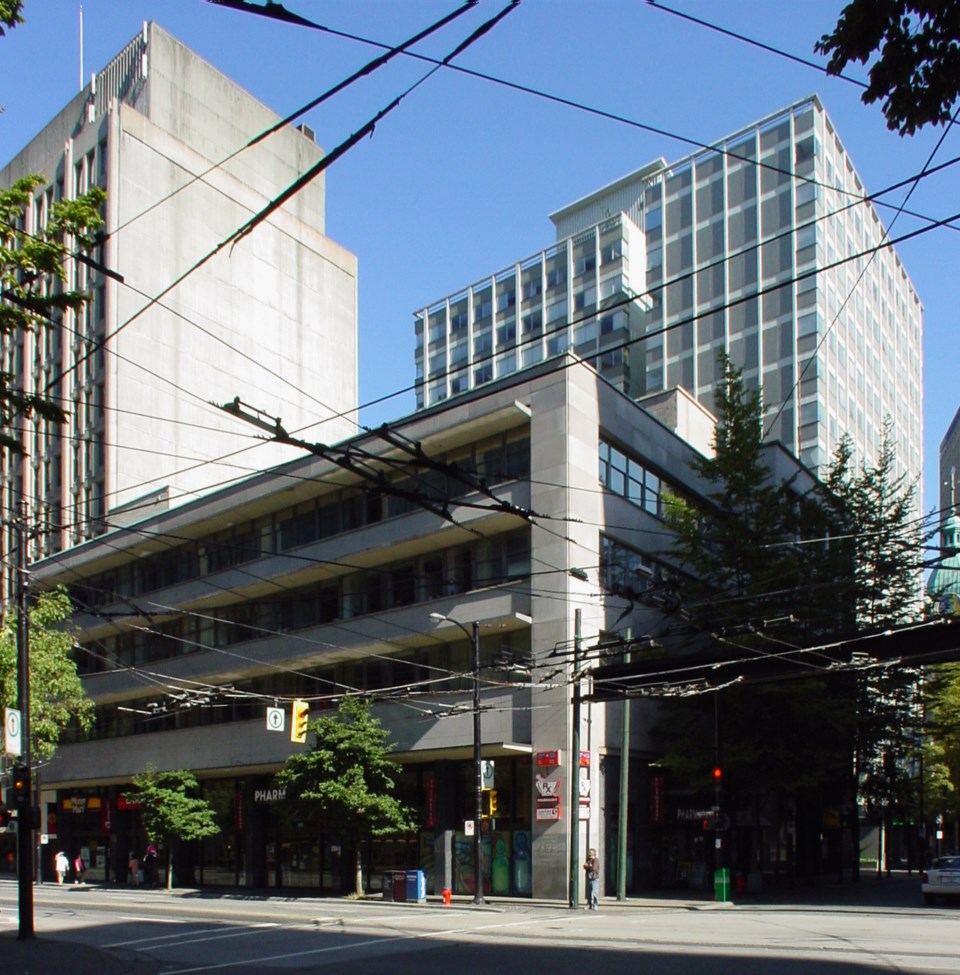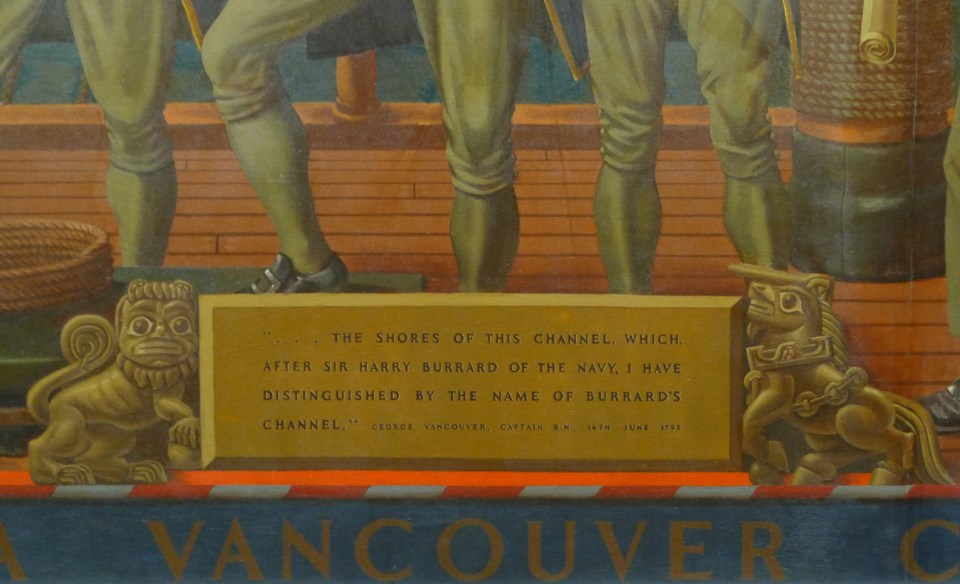I've been meaning to visit this mural for a long while now, so last week I made a pilgrimage to SFU Campus in Burnaby in order to see the Comfort mural in person. As you may recall I'm a big fan of large scale public art commissions (the lost Hughes/Fisher/Goranson murals of the 1939 Golden Gate International Exposition being a favourite research topic of mine), and this mural is no exception. Ladies and Gentlemen, I present my longest post to date, filled with all the details I could muster on this monumental work of art.
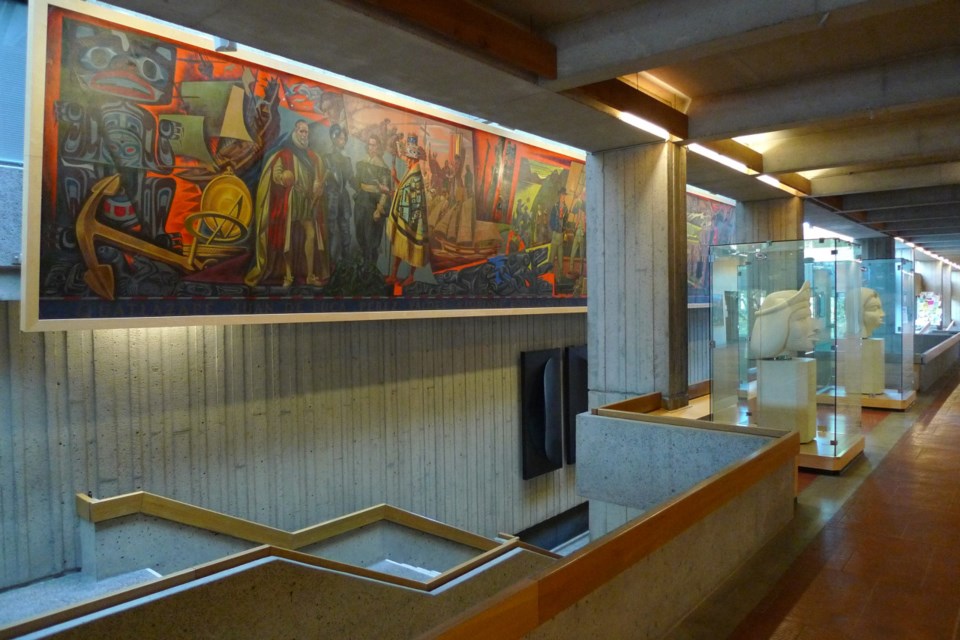
BC Pageant, a 19 metre long mural painted by Charles Comfort.
Scottish-born Canadian artist Charles F. Comfort RCA painted the mural in 1951, assisted by muralist Orville Fisher and two of their art students: Barbara Kathryn Cook (later Barbara Kathryn Cook-Endres) and Gordon Dixon (a Vancouver School of Art student of Orville Fisher at the time).
The mural was commissioned by TD Bank and it was painted onsite at 499 Granville Street in Vancouver. About the mural’s former home, architects McCarter and Nairne built the Granville and Pender branch in 1948-49, a building that exemplified the International style. Later in 1958, McCarter and Nairne was once again hired to build another flagship bank across the street, this time for the Imperial Bank of Commerce (seen on Illustrated Vancouver previously).
The original home of the Comfort mural, the former TD Bank branch at 499 Granville Street.
The TD branch was closed in 2002, and BC Pageant was donated to Simon Fraser University in 2004. The mural is now located outside the Robert C. Brown Hall, in the northwest corner of the Quadrangle, at the end of a 144 metre long hall featuring British Columbia art from the SFU collection.
Thanks to a $50,000 donation from the family of the late Allen Lambert and another $25,000 from TDBFG, SFU was able to restore the grime and smoke stained B.C. Pageant. Lambert was a longtime manager and CEO at the TDBFG and founded its art collection. [source]
The size of this mural is enormous; it is so large, in fact, it’s hard to appreciate the mural all at once.This is compounded by the placement of the mural in front of two large concrete pillars. To assist your appreciation of the mural, I’ve stitched together a rough panorama of the artwork. It’s a serious copywork challenge that requires at least 8 separate shots to be stitched together lengthwise, and if you’re trying this yourself, polarizing filters should be used to counter any glare on the painting’s surface (I didn't have one handy).
A series of key figures from British Columbia’s history are named along the bottom of the mural: Quatlazape, Juan de Fuca, Pérez, Valdéz, Maquinna, Bodega-Quadra, Vancouver, Cook, Mackenzie, Fraser, Thompson, McLoughlin, Simpson, and Douglas.
I won't go into great detail to explain the significance of all these early figures, but I will provide links to their Wikipedia pages so that you can study them further (all but Chief Quatlazape are on Wikipedia, so you'll just have to Google him). Here are their full names, with appropriate links: Chief Quatlazape, Juan de Fuca, Juan José Pérez Hernández, Cayetano Valdés y Flores, Chief Maquinna of the Mowachaht, Juan Francisco de la Bodega y Quadra, Captain George Vancouver, Captain James Cook, Sir Alexander Mackenzie, Simon Fraser, David Thompson, Dr. John McLoughlin, Sir George Simpson, and Sir James Douglas.
These words appear to be painted on a plaque in the centre of the mural:
“…The shores of this channel, which, after Sir Harry Burrard of the Navy, I have distinguished by the name of Burrard’s Channel.” George Vancouver, Captain, R.N. 14th June, 1792.
Should that be June 13th instead? Did he actually name the channel on the 14th? Technically, I'm not sure. Here's where I'd like to see an image or two from Captain George Vancouver's actual journals, just to see the precise words he uses to describe the region. This painting by Jim McKenzie which I featured a few months ago sums up a simulated birds eye view of the landscape that the early explorers would have encountered.
When murals delve into the domain of history and politics, they are often subjected to some form of controversy. When Diego Riviera included the head of Lenin in a mural he painted for the Rockefeller Center in 1933, it became such a contentious issue, work came to a halt, and the mural was destroyed in February of 1934.
In recent years, the Comfort mural has faced criticisms of romanticizing colonialism. After it was installed at SFU, an Anti-Colonial Art Contest was held to create dialogue over the depiction of aboriginal peoples in the mural. A speech by Dr. Michael Stevenson, President and Vice-Chancellor of SFU, provided a response to some of that dialogue.
George Southwell’s murals in the provincial legislature in Victoria faced similar criticisms, and as a result, a motion was passed in 2007 to remove them (although technically, they have been covered over, not removed). You can read the lengthy discussion from the Hansard by searching for the word Southwell.
While it’s true that mural artwork often does present a nostalgic, romantic, and propagandized view, I’m not sure we’ve ever seen a truly historically accurate depiction of anything in a mural, short of Guernica perhaps? (I jest.) To its credit, the mural does feature the artistry of Pacific Northwest aboriginal culture, and with a certain amount of poetic justice, two large sculptural figureheads by Bill Reid now take centre stage in front of the mural.
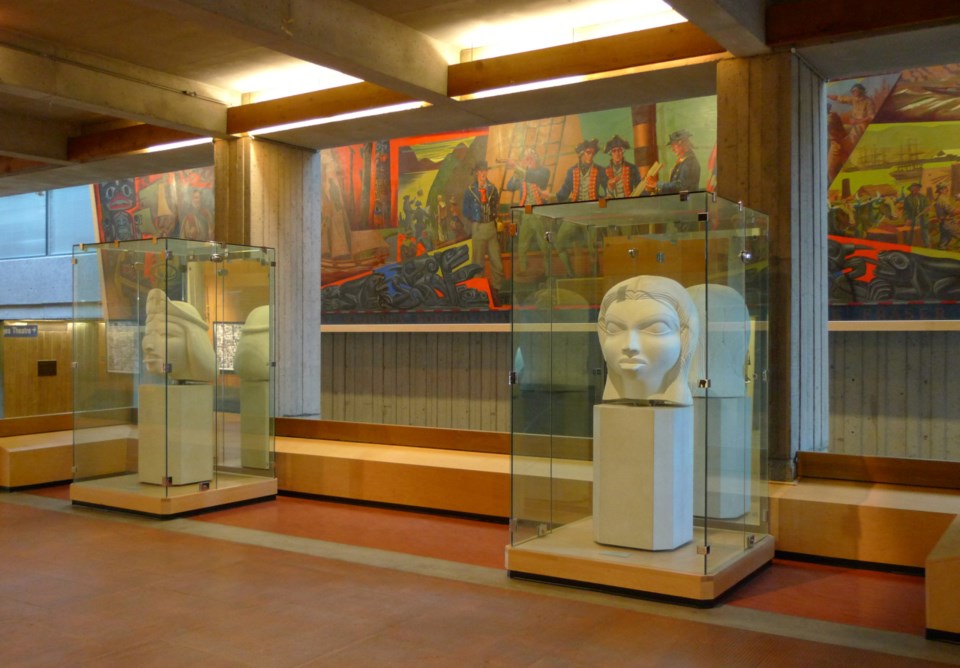
As for the figures that appear in the mural, I was very eager to try and identify them all. It was tricky work, and based on the names that appear along the bottom of the mural, I thought it would be simple. I had nearly everyone identified except for the man in the military uniform. It turns out, I was close, but I didn’t have all the right answers. If you want to try and guess the figures yourself, you will need to avert your eyes from this next section, as it is loaded with spoilers! With help from SFU Art Gallery director and curator Bill Jeffries and with research assistance provided by SFU student Katie, I can now provide the definitive list:
- Starting at left, the primary figures are: Juan de Fuca, Lorenzo Ferrer de Maldonado (who provided a circumstantial account of a successful northwest passage voyage in the winter of 1588), Admiral Bartholomew de Fonte (who may actually be a fictional figure), and Nootka Chief Maquinna.
- Behind these four figures and to the right, a secondary scene illustrates Lieutenant Juan Francisco de la Bodega y Quadra and his men who have just erected a cross on the beach.
- A series of majestic totem poles appear next, the centre totem pole being the Dog-Salmon pole at Gitwangak (Kitwanga) Village (which had been one of Emily Carr’s subjects), and the totem pole on the right being a Haida pole.
- The next party of explorers shows Captain James Cook on his 3rd voyage, as he explores and maps the Pacific coast up to the Bering Strait.
- Captain George Vancouver and his men are prominently featured in the centre of the mural, the first European to enter Burrard Inlet in June of 1792.
- Next, Sir Alexander Mackenzie is commemorated with a plaque from July 22, 1793; shown traveling from right to left, he was the first European to record a transcontinental crossing of Canada from east to west.
- The party of men traveling by canoe represents Simon Fraser descending the rough waters of the Fraser River.
- Below, the early settlers of Granville begin to log and farm the land, establishing the City of Vancouver.
- Representing Culture, Emily Carr is shown handing a painting to the Honourable Eric W. Hamber, C.M.G., LL.D., Chancellor Emeritus of the UBC, who represents Education.
- The final two figures represent National Defense and Labour. Major General Bertram M. Hoffmeister represents Defense (after WWII he became President of MacMillan Bloedel Limited in 1949), while Labour is represented by the anonymous figure of a Logger, British Columbia’s primary industry.
Much of this was substantiated in a brochure titled: “British Columbia Pageant: A romantic mural painting by Professor Charles F. Comfort, R.C.A. bearing on the discovery and development of British Columbia”, with additional links and details provided by wikipedia and the web.
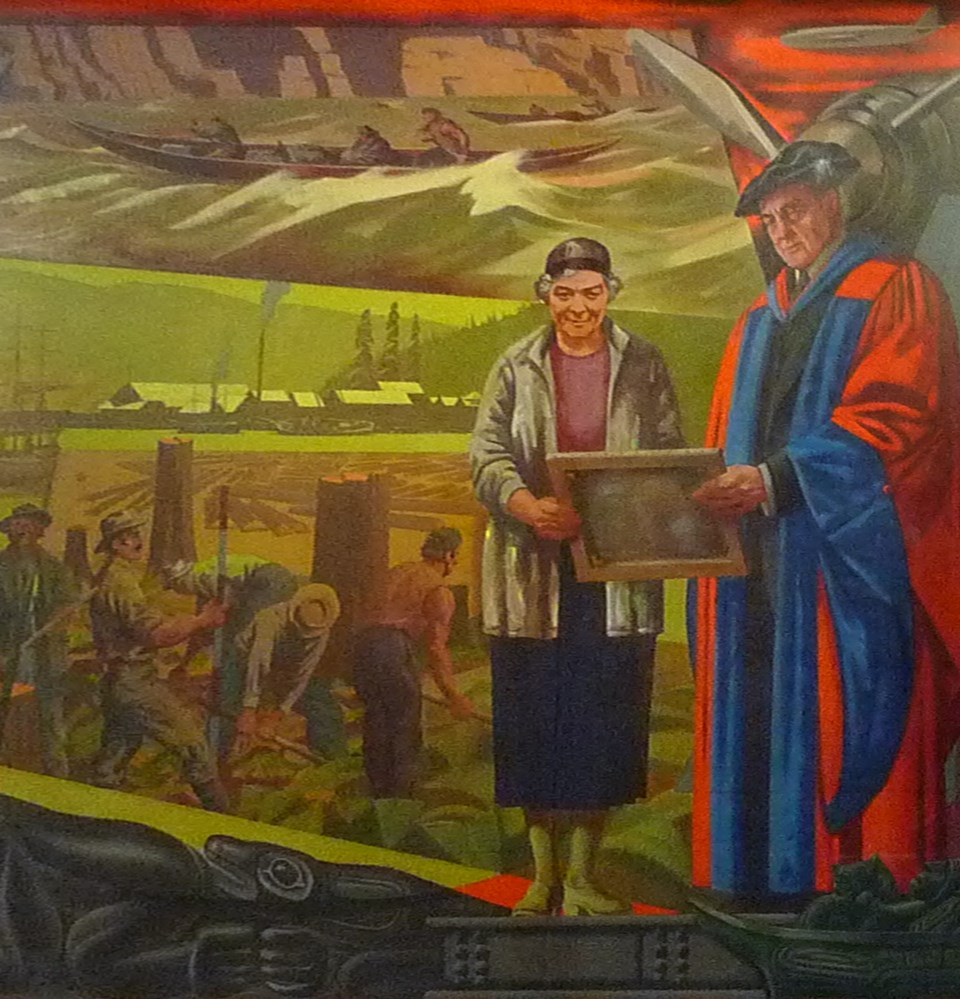
I think my favourite part of the mural is the fact that Emily Carr is so prominently acknowledged in the right half of the mural as she hands one of her paintings to Eric Hamber, then Chancellor of UBC. The reality is, Emily Carr passed away in 1945 shortly before she was to receive an honorary doctorate from UBC. In fact, of all the figures in the mural, to me, she looks the most heroic with her humble attire and unassuming smile. As so much of her work went unrecognized during her own lifetime, at least in this mural she can be the recipient of her country’s eternal respect.
As for everything I've written about the mural thus far, it really is just the beginning of what can be said of the work. I've tried to keep my own opinions, analysis, and interpretations of the artwork to a minimum so that you can experience the mural yourself, drawing your own conclusions, making your own discoveries, building your own thesis or hypothesis. Therein lies the true beauty of art. Now go and appreciate some art this weekend!
